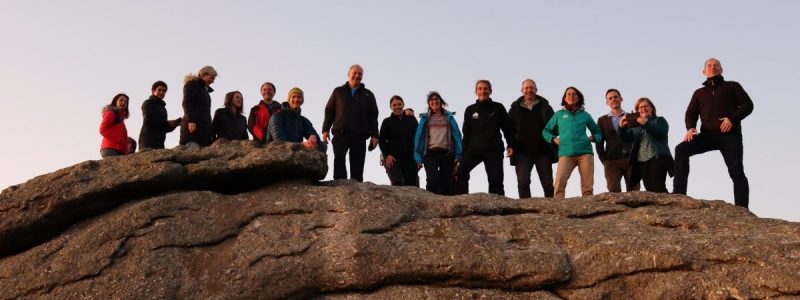- A walking and cycling route to enjoy Common land in Wales by By Elena Bianchi Network Development Manager, Rural Gaps Project Sustrans
- Wildlife in Common, a common land project for Norfolk by Helen Baczkowska, Conservation Officer, Norfolk Wildlife Trust
- Improving recreational users’ experience of the New Forest by Dr Jo Ivey Co-ordinator: Shared Forest project, New Forest Commoners Defence Association
- Recreational activities on commons – findings from Natural England’s Monitor of the Engagement in the Natural Environment by Pippa Langford, Principal Specialist Commons and Rights of Way, Natural England
- Identifying Attributes of Successful Management of Upland Commons. by Julia Aglionby Executive Director - England, Foundation for Common Land
- Pastoral Commons in the Lake District, coping, embracing or shaping change in the 21st century? by Dr Andrew Humphries
- BULUK I GUD MAKEM GROUN REEJ -“Cattle are good for the soil” by Terry Robinson Chairman Outdoor Recreation Network and Chairman National Trust Minchinhampton and Rodborough Commons Committee Steve Kilmister Secretary Minchinhampton Commoners Council
- Fencing of New Woodlands and Scrub on Open Access Land and its Effect on Access by Geoff Wilson and Ken Taylor, Members of the Cumbria & Lakes Joint Local Access Forum.
Journal Forward
In this special issue of the ORN Journal we celebrate common land with a seriesof articles that highlight the challenges of managing these special places and the innovations that help a wide range of uses co-exist and thrive. But first some background.
There are 546,000 ha of registered common land in England and Wales and 590,000 ha of common grazing in Scotland. Whilst covering just 4.8% of Britain, they provide public benefits out of all proportion to their area. In England alone, some 88% of all common land is nationally or internationally important for its wildlife, landscape or archaeological interest, whilst almost all is available for public access. Many commons are notable for their high scenic value, and include some of the nation’s most treasured landscapes, whilst others provide valuable greenspace close to local centres of population.
Looking specifically at access and recreation, commons attract tens of millions of visitors each year, contributing significantly to local economies and employment. The Brecon Beacons, Dartmoor, Lake District and New Forest each comprise more than one third common land. Collectively these four Parks receive almost 45 million visitor days per year, contributing £1.4 billion to local economies. Some 18 million people live within a four-hour drive of the Gower AONB, which contains 24 individual commons covering 70 square kilometres of hills, coastal cliffs and estuaries. Some of Scotland’s most evocative landscapes are common grazings, including the Cuillins and Quirang of Skye, the machairs of Uist and Tiree, Iona, and much of Shetland. As a result, tourism is a significant employer in Shetland, involving 8% of the workforce. Finally, there are 122 registered commons in Greater London, with Hampstead Heath covering over 100ha. These provide scarce opportunities for relaxation, play and observation of wildlife within stressful urban environments, and many are important for their historic and cultural associations. Surrey has over 9,000 ha of common, all accessible from major centres of population.
Commons are not passive places, waiting to be visited and experienced, in many places, notably the uplands, commons are living places with a high cultural value to those who live and work there. In this sense commons are an enduring part of the rural landscape, derived from a time when most resources were shared forming the life-blood of local communities for the best part of a millennium. Such sharing was based on legally recognised and defendable rights, which continue to be celebrated through traditional rituals and customs. There are seven main common rights: pasturage (the right to graze); pannage (depasturing pigs on acorns); turbary (taking peat for fuel); piscary (fishing); estovers (collecting sticks, heath and bracken); and the rights to minerals, or animals for food. It is mainly the right to graze that remains a vital component of rural economies, especially on hill farms where there are about 8,000 practicing commoners. As can be seen from the articles, many commoners have their own association. However, the special issue has been supported by a more recent organisation, the Foundation for Common Land[1]. This registered charity has a vision for ‘vision thriving commoning communities across Great Britain and beyond making real contributions to economic, cultural and environmental wellbeing’. It actively seeks for innovative solutions that make a make a difference to both commoners and those who experience the many public benefits that commons provide.
In this issue you can read about the challenges of managing common land to the benefit of all both in lowland situations such as the New Forest and Minchinhampton as well as the uplands of the North and South West. There are great opportunities to collectively enjoy the wildlife of the commons in Norfolk and the Wales. As the results of the survey from Natural England confirm commons really are for everyone, whatever your recreational activity.
Chris Short, Chairman, Foundation for Common Land
[1] See www.foundationforcommonland.org.uk
